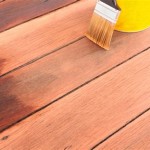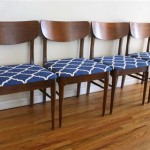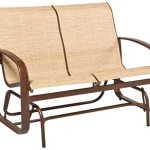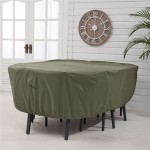How to Restore Cracked Leather Furniture
Leather furniture offers a touch of elegance and sophistication to any living space. Its durability, when properly maintained, can ensure longevity. However, over time, leather can develop cracks, diminishing its aesthetic appeal and potentially affecting its structural integrity. Understanding the causes of these cracks and implementing appropriate restoration techniques can significantly extend the lifespan of leather furniture and restore its original beauty.
Leather cracking is primarily caused by the loss of natural oils and moisture within the leather fibers. This can be accelerated by several factors, including exposure to direct sunlight, fluctuating humidity levels, improper cleaning methods, and general wear and tear. When leather dries out, it becomes brittle and less flexible, leading to the formation of cracks, particularly in areas that experience repeated stress, such as seating surfaces, armrests, and backrests.
Before embarking on a restoration project, it is essential to identify the type of leather. Common types include aniline leather (also known as full-grain or naked leather), semi-aniline leather, and pigmented leather (also known as protected or top-coated leather). Aniline leather is the most natural, showing the leather's unique grain and markings. Semi-aniline leather has a light protective coating, while pigmented leather has a more durable, opaque finish. The type of leather will influence the choice of cleaning and restoration products. Testing any product on an inconspicuous area first is crucial to ensure compatibility and prevent further damage.
Assessing the Damage and Gathering Supplies
A thorough assessment of the damage is the initial step in restoring cracked leather furniture. This involves identifying the extent and severity of the cracking. Minor surface cracks may only require a simple conditioning treatment, while deeper, more extensive cracks might necessitate filling and repairing. Note the location of the cracks, as this can indicate areas of high stress or dryness. Documenting the condition with photographs before beginning any restoration work is also advisable.
Once the damage is assessed, gathering the necessary supplies is paramount. These supplies generally include:
- Leather cleaner: Choose a cleaner specifically formulated for the type of leather being treated. A pH-balanced cleaner is generally recommended.
- Leather conditioner: A high-quality leather conditioner helps to replenish oils and moisture, restoring flexibility and preventing further cracking.
- Leather filler: This is a pliable substance used to fill deeper cracks and crevices, providing a smooth surface for repair.
- Leather dye or colorant: Required if the filler alters the color of the leather or if the existing color needs to be touched up.
- Sandpaper (various grits): Used for smoothing rough edges and preparing the surface for filler and dye. Fine-grit sandpaper (320-400 grit) is generally suitable.
- Applicator sponges or cloths: For applying cleaner, conditioner, and dye. Use lint-free cloths to prevent residue.
- Palette knife or spatula: For applying and smoothing leather filler.
- Heat gun or hair dryer: Can be used to accelerate drying times of filler and dye. Use cautiously to avoid overheating and damaging the leather.
- Leather finish or sealant: Provides a protective layer over the repaired area, sealing in color and preventing future damage.
Ensuring a well-ventilated workspace is also essential, especially when using solvents or dyes. Wearing gloves and protective eyewear is also recommended to prevent skin and eye irritation.
Cleaning and Preparing the Leather Surface
Properly cleaning and preparing the leather surface is a critical step in the restoration process. This removes dirt, grime, and accumulated oils, allowing the cleaning to be effective restoration products to properly penetrate the leather. Start by gently vacuuming the furniture to remove loose debris, paying particular attention to crevices and seams. Use a soft brush attachment to avoid scratching the leather surface.
Apply a leather cleaner to a clean, damp applicator sponge or cloth. Gently wipe the entire surface of the furniture, using a circular motion. Avoid excessive rubbing or soaking the leather. Work in small sections, and immediately wipe away any excess cleaner with a clean, damp cloth. Allow the leather to air dry completely before proceeding to the next step. This may take several hours, depending on the humidity and temperature.
Once the leather is dry, inspect the cracked areas. If the edges of the cracks are rough or jagged, use fine-grit sandpaper (320-400 grit) to gently smooth them down. Be careful not to remove too much material or create further damage. The goal is to create a smooth, even surface for the filler to adhere to. Wipe away any sanding dust with a clean, damp cloth.
Filling and Coloring the Cracks
After cleaning and preparing the surface, the next step involves filling the cracks with a leather filler. This will help to restore the surface to a smooth, even condition. Using a palette knife or spatula, apply a small amount of leather filler to the cracked area. Press the filler firmly into the crack, ensuring that it completely fills the void. Avoid overfilling, as this will require more sanding later.
Smooth the filler with the palette knife or spatula, creating a level surface that is flush with the surrounding leather. Wipe away any excess filler with a clean, damp cloth. Allow the filler to dry completely according to the manufacturer's instructions. This may take several hours or overnight. A heat gun or hair dryer can be used to accelerate the drying process, but use caution to avoid overheating the leather.
Once the filler is dry, use fine-grit sandpaper (320-400 grit) to gently sand the filled area. The sanding should create a smooth, seamless transition between the filler and the surrounding leather. Wipe away any sanding dust with a clean, damp cloth. Inspect the repaired area to ensure that the filler is flush with the surface and that there are no remaining imperfections.
If the filler has altered the color of the leather or if the existing color needs to be touched up, apply a leather dye or colorant to the repaired area. Choose a dye or colorant that closely matches the original color of the leather. Apply the dye or colorant with an applicator sponge or cloth, using a light, even coat. Work in small sections, and blend the color into the surrounding leather. Allow the dye or colorant to dry completely according to the manufacturer's instructions. Multiple coats may be necessary to achieve the desired color. A heat gun or hair dryer can be used to accelerate the drying process.
Conditioning and Protecting the Repaired Leather
The final step in the restoration process involves conditioning and protecting the repaired leather. This will help to restore moisture and flexibility to the leather, preventing further cracking. It will also provide a protective layer that will help to resist dirt, stains, and wear.
Apply a high-quality leather conditioner to a clean applicator sponge or cloth. Gently wipe the entire surface of the furniture, using a circular motion. Pay particular attention to the repaired areas, ensuring that they are thoroughly conditioned. Allow the conditioner to penetrate the leather for several hours or overnight. Wipe away any excess conditioner with a clean, dry cloth.
After conditioning, apply a leather finish or sealant to the repaired area. This will provide a protective layer over the color and help prevent future wear and tear. Choose a finish or sealant that is compatible with the type of leather being treated. Apply the finish or sealant with an applicator sponge or cloth, using a light, even coat. Allow the finish or sealant to dry completely according to the manufacturer's instructions. Multiple coats may be necessary for optimal protection.
Regular maintenance is crucial for preserving the restored leather furniture. Dust the furniture regularly with a soft cloth to remove loose debris. Clean the furniture periodically with a leather cleaner, following the manufacturer's instructions. Condition the furniture every few months to maintain its moisture and flexibility. Avoid exposing the furniture to direct sunlight or extreme temperature fluctuations. With proper care and maintenance, restored leather furniture can provide years of enjoyment.
Addressing stains promptly is also vital. Blot spills immediately with a clean, absorbent cloth. Avoid rubbing the stain, as this can spread it further. For stubborn stains, consult a professional leather cleaner. Avoid using harsh chemicals or solvents on leather, as they can damage the finish and cause further cracking. A proactive approach to leather care can significantly extend the lifespan of furniture and minimize the need for extensive restoration projects in the future.

Restore Cracked Leather Couch Tips Repair Guide We Can Fix That

How To Repair Cracked Leather And Your Options Leatherneo

Fix Rips And Cracking On A Leather Chair Youtube

Fix Cracking Leather Repair Video Youtube

How To Repair Leather At Home

Home Dzine How To Restore And Prevent Cracked Leather

20 Leather Repairs You Must See To Believe The Doctor

How To Repair Cracked Or Peeling Leather Vinyl Material For Car Furniture Youtube

Leather Furniture Repair Rustique Art

Antique Leather Sofa Restoration The Surgeons
See Also








